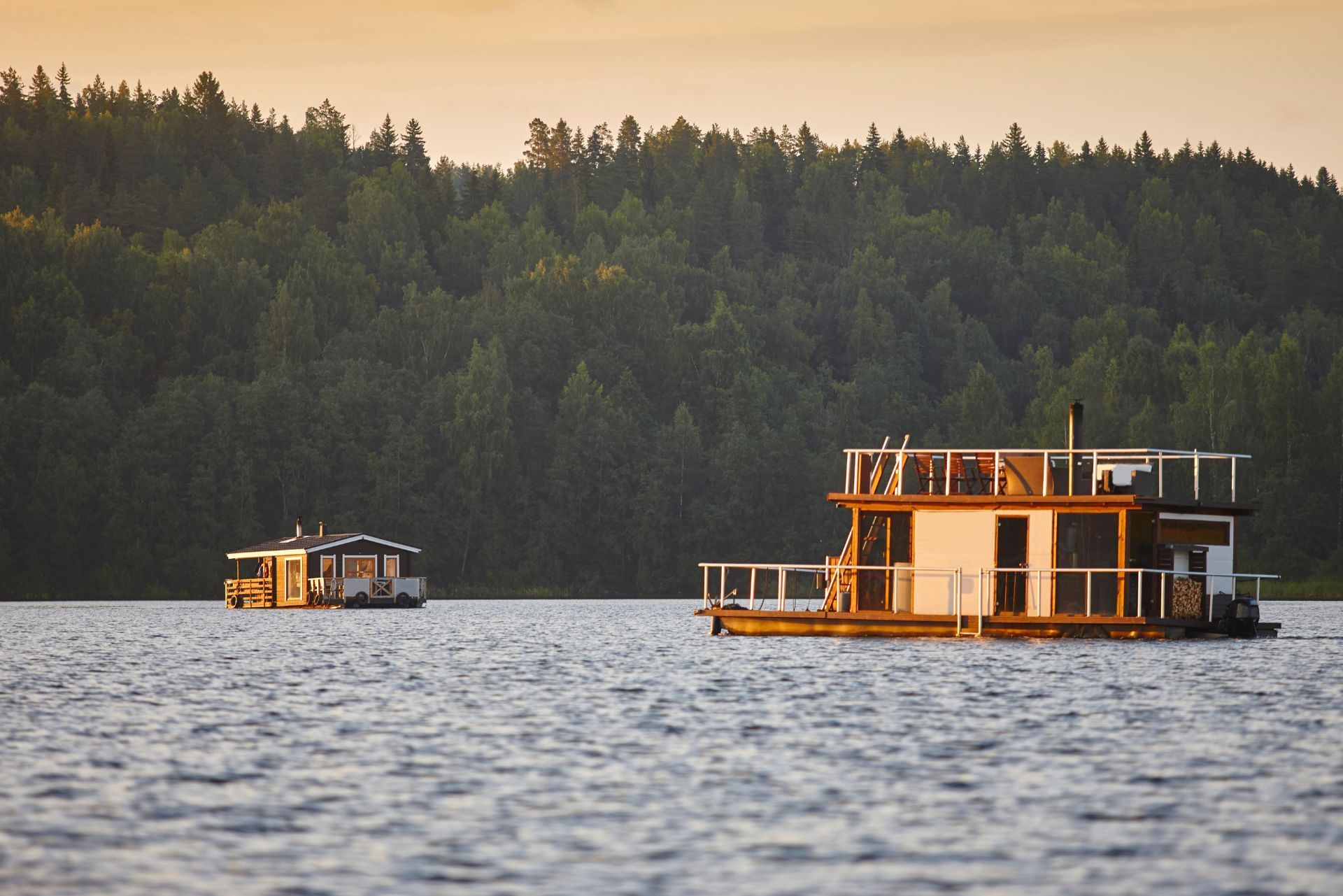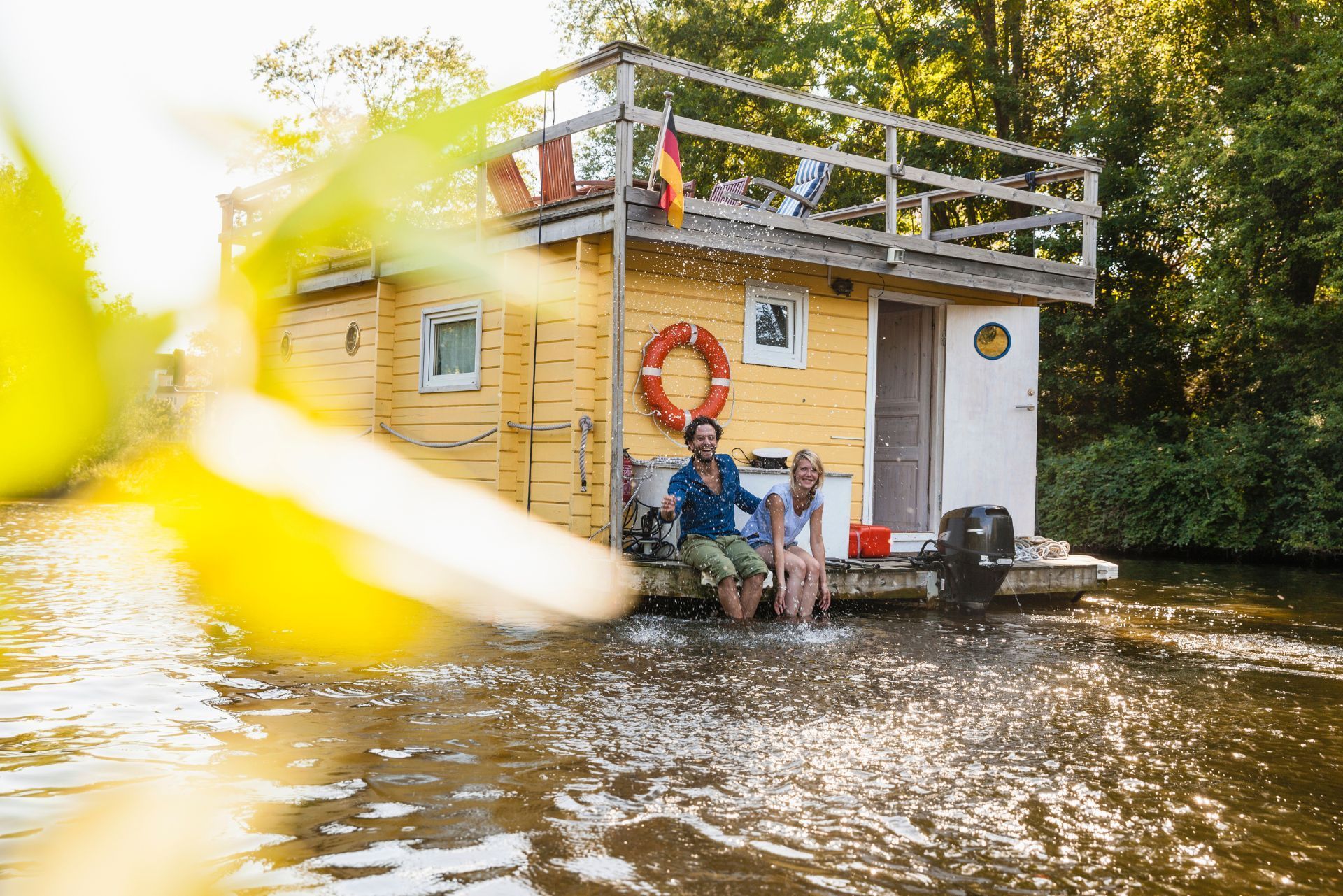Top 3 Recommended Policies

By: David Graves
Licensed Personal Insurance Specialist
425-320-4280
The Puget Sound, Columbia River, and Washington’s hundreds of lakes create one of the most vibrant recreational and commercial boating scenes in the United States. From family-owned fishing docks in Ilwaco to sleek yacht clubs on Lake Union, almost every shoreline structure has something in common: exposure to weather, water, and a complex web of state regulations. A boathouse is more than a roof over a vessel; it is a significant real-estate investment and, in many cases, the backbone of a marine-related livelihood. Because the risks are unique, ordinary homeowners or business policies rarely provide enough protection, making specialized boathouse insurance a necessity rather than a luxury.
Washington’s Department of Licensing counted roughly 224,000 registered vessels in 2023, a figure that has grown steadily since the pandemic-era boating boom. Every increase in traffic raises the chance of collision, wake damage, pollution, and liability claims originating in or around a boathouse. Add the Northwest’s notorious winter storms, record-breaking king tides, and an uptick in property crime targeting outboard engines and electronics, and the coverage gaps become painfully clear. Knowing exactly what a boathouse policy should include — and how to secure fair premiums — can prevent costly surprises when the unexpected occurs.
This comprehensive guide explores current statistics, major risks, required coverages, and practical tips specific to Washington. Property owners, marina operators, yacht brokers, and even seasonal renters will find step-by-step insight on everything from environmental compliance to filing a claim after a rogue log crashes into a dock. By the end, readers will be able to speak confidently with an insurer, compare quotes on equal terms, and craft a risk-management plan that keeps both structure and occupants safe year-round.
Understanding the Boating Landscape in Washington
Washington is home to almost 3,100 miles of marine shoreline and an additional 8,000 miles of lake and river banks, according to the state Department of Ecology. The geographic diversity invites sailboats, trawlers, kayaks, and ferries onto the water virtually every day of the year. That activity translates into more than $4 billion in annual economic output for the marine sector, touching businesses from boatyards to seafood processors. Boathouses function as storage units, workshops, and social centers for this ecosystem, making them pivotal to local commerce.
Regulations also vary drastically by region. Structures on federally managed reservoirs such as Lake Roosevelt follow different building codes than those on city-owned sections of Lake Washington. Meanwhile, any boathouse that floats in navigable waters comes under the jurisdiction of the U.S. Army Corps of Engineers. This patchwork of rules influences everything from roofing materials to liability limits that an insurance policy must reflect.
Recreational Boating Statistics
The 2023 Recreational Boating Safety Report issued by the U.S. Coast Guard recorded 138 reportable accidents in Washington, resulting in 20 fatalities and estimated damages of $2.6 million. Nearly 30 percent of those incidents occurred at or near a dock or boathouse, underscoring how frequently structures become the stage for emergencies. Nationwide, the average property-damage claim for a dockside fire exceeded $110,000, a figure insurers use when setting regional premiums.
Age demographics highlight another trend: boaters under 35 represent the fastest-growing segment on Washington waters, accounting for almost 40 percent of new registrations. Younger owners tend to embrace high-horsepower craft and personal watercraft, both of which generate stronger wakes. Those wakes often collide with older, shallow-draft boathouses built before current engineering standards, pushing claim volumes higher among legacy properties.

What Makes Boathouse Insurance Unique?
Standard boat insurance focuses on hull damage, personal liability while navigating, and onboard equipment. A boathouse policy, by contrast, listens to the wood pilings, electrical lines, and environmental hazards anchored in one place. It bridges the gap between commercial property insurance and marine liabilities, addressing factors like submerged lands leases, navigational obstructions, and fuel-spill cleanup mandates that land-based packages simply ignore.
Premium calculations also differ. Where homeowner policies rely heavily on neighborhood crime statistics and fire-department proximity, boathouse insurers weigh storm-surge history, tide data, breakwater conditions, and even the salinity that corrodes electrical conduits. Underwriters often request engineering surveys of flotation barrels or steel I-beams, particularly for structures built before 1990. The resulting appraisal becomes the backbone of coverage limits and deductibles.
Difference Between Boathouse and Boat Insurance
Confusing these products can leave costly gaps. If an electrical short ignites a blaze in the boathouse and spreads to the vessel, the boat policy may pay only for hull repairs, while the building remains uninsured. Conversely, a boathouse policy does not automatically extend to navigation-related liability once the boat leaves the slip. Pairing separate policies or purchasing a packaged “marina operator” form ensures overlapping protections that travel with both asset and structure.
Key Coverage Components
A typical Washington boathouse policy bundles three pillars: property, liability, and environmental protection. Property covers physical damage from wind, fire, snow load, theft, vandalism, and collision with floating debris. Liability addresses bodily injury or property damage suffered by third parties, including claims from neighboring dock owners if the insured structure breaks loose. Environmental coverage funds containment booms, soil remediation, and government fines resulting from leaks of fuel, paint, or bilge water originating inside the boathouse.
Risks Facing Washington Boathouses
Climatologists at the University of Washington note that the frequency of “atmospheric river” events has doubled in the last 25 years. These moisture-laden storms deliver wind gusts exceeding 60 mph and rainfall that can add hundreds of pounds to a boathouse roof. Snow load poses a separate threat east of the Cascades, where February 2021 storms collapsed more than a dozen covered slips on Lake Chelan. As weather volatility increases, so does the actuarial risk baked into insurance premiums.
The Pacific Northwest is also part of the Cascadia Subduction Zone. While a megathrust earthquake receives most of the headlines, even moderate seismic jolts can shear pilings or rupture utility lines crossing a boathouse apron. Standard policies often exclude earthquake damage unless an endorsement is added, making awareness of geological threats crucial.
Environmental Factors
Saltwater accelerates corrosion of metal fasteners and electrical hardware, raising the probability of fires. Marine borers such as gribbles and shipworms tunnel into wooden pilings, slowly undermining structural integrity until a sudden collapse occurs. Freshwater sites face invasive mussels that clog cooling systems and compromise flotation drums. Insurers sometimes require annual pest inspections in exchange for reduced deductibles, a worthwhile trade-off for most owners.
Operational Liabilities
A boathouse doubles as a workplace whenever maintenance occurs. Washington’s Labor & Industries department recorded 57 injuries at small boatyards and private docks between 2020 and 2023, ranging from falls into icy water to chemical burns from resin. If contractors or friends lend a hand, the owner could be liable for medical bills unless a policy’s “operations liability” clause is activated. Careful documentation of safety protocols and contractor insurance certificates can minimize premium surcharges.
Core Policy Types and Optional Add-Ons
Insurance carriers usually offer three foundational policy types: actual-cash-value (ACV), replacement-cost (RC), and agreed-value. ACV subtracts depreciation, making it cheaper but risky for aging wooden structures. RC covers the cost to rebuild using modern materials, often at 15-20 percent higher premiums. Agreed-value locks in a specific payout amount, useful for custom boathouses with premium lumber or historic significance.
Beyond the base form, optional add-ons expand protection. Popular endorsements include coverage for floating walkways, hoists, and solar panels installed on the roof. Business-income riders compensate commercial operators for lost slip-rental revenue during repairs. Equipment breakdown insurance pays for failed shore-power pedestals or pump-out stations, items that typical property clauses exclude.
Property Coverage
Insurers typically assign separate sublimits for roof, siding, and interior improvements such as lofted lounges or tool rooms. Wind-driven rain, a common culprit in the Puget Sound, may require a special deductible similar to a hurricane deductible on the East Coast. Some policies extend to landscaping features like bulkheads and retaining walls, so owners should verify wording carefully.
Liability Coverage
Most carriers start at $500,000 per occurrence, but marinas often demand slip-rental tenants carry at least $1 million. Umbrella policies that extend to $2 million or more are inexpensive compared to potential legal fees. Coverage should include sudden and accidental pollution liability, an important distinction because gradual leaks might remain excluded without a separate endorsement.
Business Interruption Protection
After the 2022 Kingston marina fire, several boathouse owners lost thousands in short-term moorage income while electricians rebuilt the power grid. Business interruption insurance replaced gross profits for up to 12 months, allowing owners to meet loan payments and retain staff. Although widely available, this rider often goes overlooked by small outfits that assume structural damage is the only financial threat.
Regulations and Compliance in Washington State
Washington’s Shoreline Management Act (SMA) requires local jurisdictions to adopt shoreline master programs that dictate where and how boathouses may be built. Insurance underwriters review SMA permits to confirm legal occupancy; unpermitted structures risk denial of claims. The state also enforces strict storm-water runoff standards that mandate oil-water separators or filtration systems, adding another compliance layer.
Failure to meet these regulations can result in penalties that most property policies do not cover. For example, the Department of Ecology can levy fines of up to $10,000 per day for unlawful discharges, a cost that pollution-liability riders explicitly address. Staying up to date with permitting and environmental guidelines therefore has a direct impact on insurability.
Department of Ecology Requirements
Since 2020, new floating structures must demonstrate a zero-discharge plan, including sealed bilge systems and onsite emergency-spill kits. Insurers may offer premium credits if owners submit annual proof of compliance. Conversely, a missing spill response plan often triggers higher deductibles or even policy rejection, especially in sensitive habitats like Padilla Bay.
Local Marina Rules
Many private marinas require indemnification agreements and “additional insured” status on a tenant’s policy. Failure to list the marina can void the slip lease. Reading these contracts closely prevents last-minute scrambles when renewal paperwork is due. Some marinas also set minimum hull-out intervals for inspections, reducing claims related to hidden damage beneath the waterline.
How to Calculate the Right Amount of Coverage
Proper valuation begins with a professional appraisal that separates labor, materials, and site-specific costs such as pile driving. Rebuilding even a modest 30-by-40-foot boathouse in Puget Sound can exceed $250,000, thanks to local labor rates and stringent environmental safeguards. Shortchanging limits to save on premiums risks invoking the coinsurance clause, which can reduce payouts if coverage falls below 80-90 percent of replacement cost.
Insurers also factor location, construction type, age, security systems, and claims history. A boathouse moored behind a breakwater on Lake Union will fetch lower rates than one facing direct swell on the Strait of Juan de Fuca. Installing surveillance cameras or automated fire-suppression foam can shave 5-15 percent off annual premiums, according to several regional underwriters.
Valuation Methods
Replacement-cost estimators rely on square footage and material-cost indexes published quarterly. Owners who have renovated with exotic hardwoods or energy-efficient windows should supply invoices to avoid undervaluation. Agreed-value policies require an appraisal report every three to five years to keep pace with inflation and construction-code updates.
Deductibles and Premium Factors
Deductibles typically range from $1,000 to $10,000. Raising the deductible from $2,500 to $5,000 can drop premiums by 8-12 percent, but only makes sense if cash reserves cover the higher out-of-pocket expense. Loss-control surveys, completed once every three years, also affect rates; boathouses that correct noted deficiencies promptly often qualify for loyalty discounts.
Choosing an Insurer and Comparing Quotes
More than a dozen carriers write marine property in Washington, yet only a handful specialize in boathouses. Selecting one with a dedicated marine claims team accelerates repairs when watercraft, environmental agencies, and structural engineers must coordinate. Financial strength ratings from A.M. Best or Standard & Poor’s reveal whether a company can handle catastrophic losses affecting multiple policyholders at once.
Obtaining at least three written quotes ensures comparable coverage and exposes policy nuances. Always review exclusions, sublimits, and endorsements line by line rather than focusing solely on premium. Some carriers exclude damage from ice jacking, a peril relevant to Lake Sammamish but irrelevant to saltwater sites, illustrating why a one-size-fits-all approach falls short.
Financial Strength and Reputation
An insurer rated A- or higher has proven capital reserves, crucial when widespread windstorms strike. Customer-service scores can be gleaned from Washington’s Office of the Insurance Commissioner, which publishes complaint ratios. Low ratios often correlate with smoother claims experiences, especially for high-dollar marine losses that involve multiple experts.
Specialization in Marine Risks
Marine-focused insurers maintain networks of naval architects, salvage firms, and environmental contractors on retainer, expediting damage assessments. Generalist carriers might outsource those services, causing delays. Additionally, specialized underwriters can tailor deductibles for windstorm versus theft, a granular approach that saves money for owners in low-crime but high-wind locations.

Claims Process: What to Expect
Time is the enemy after water intrusion or fire. Most policies require “prompt notice,” often defined as 24–48 hours. Failing to report within that window can jeopardize coverage, particularly if mold spreads or debris drifts into navigable channels. Having emergency contact numbers readily available prevents costly hesitation.
After notification, insurers assign a marine surveyor to document structural damage, assess environmental impact, and estimate repair costs. Cooperation is mandatory; refusing access can stall settlement. Policyholders should photograph damage, preserve invoices, and maintain a log of conversations. Claims exceeding $100,000 often trigger reserve adjustments, so detailed documentation accelerates approval and payment.
Emergency Reporting
Washington State Department of Ecology requires immediate reporting of any spill that causes a visible sheen. Many insurers offer 24/7 hotlines that simultaneously notify the carrier and regulatory bodies, streamlining compliance. Failure to notify authorities could result in fines that the insurer might refuse to cover if negligence is proven.
Documentation and Assessment
Keeping digital copies of permits, maintenance logs, and contractor receipts simplifies the adjuster’s job and reduces disputes. Drone footage has become an accepted method for capturing roof damage, particularly after storms when surveyors may not reach remote sites quickly. Uploading images to a cloud drive shared with the adjuster speeds initial evaluations.
Cost-Saving Strategies Without Sacrificing Protection
Risk-management investments often pay for themselves through premium reductions and fewer claims. Installing automatic fire-suppression foam, for example, can cut fire-peril rates by up to 20 percent. Solar-powered motion lights deter theft, while smart sensors send freeze alerts that help prevent burst pipes during cold snaps east of the Cascades.
Another tactic involves seasonal occupancy clauses. Owners who shutter boathouses during winter can negotiate reduced premiums if inspections occur weekly and utilities are secured. However, leaving a structure unattended for more than 30 days without prior notification can void coverage; always confirm policy language before adopting this strategy.
Risk Management Practices
Regular diver inspections reveal submerged damage before it becomes catastrophic. Replacing corroded bolts or cracked floats during off-season haul-outs costs a fraction of post-failure repairs. Fire drills and spill-response training for staff or family members also reduce liability exposure and demonstrate due diligence to insurers.
Bundling Policies
Combining boathouse, hull, and personal umbrella policies under one carrier often unlocks multi-line discounts. Bundling reduces administrative complexity, ensuring that deductibles align and coverage gaps remain minimal. Just as importantly, one carrier managing all pieces eliminates finger-pointing during multifaceted claims.
Frequently Asked Questions
Is earthquake coverage included automatically?
No. Most Washington policies exclude seismic events unless an earthquake endorsement is purchased. Given the state’s proximity to the Cascadia Subduction Zone, adding this rider is strongly recommended.
Does a homeowner policy extend to a freshwater boathouse on personal property?
Rarely. Homeowner policies usually exclude structures over water or impose very low sublimits. A stand-alone marine policy remains the safest option.
Are live-aboard tenants covered by a standard boathouse liability clause?
Not by default. When people reside on the premises, insurers may reclassify exposure as “habitational,” requiring higher liability limits and additional inspections.
Final Thoughts
Washington’s stunning waterways invite an active lifestyle, but they also create a dense tapestry of risks and regulations that no generic insurance policy can fully address. A purpose-built boathouse package shields both structure and owner from the financial ripples that follow storms, accidents, and environmental mishaps. Choosing the correct policy type, maintaining accurate valuations, and adopting proactive risk-management measures will keep premiums affordable while ensuring rapid recovery when adversity strikes.
Armed with an understanding of local statutes, climate trends, and underwriting criteria, boathouse owners can navigate the insurance marketplace with confidence. The time invested in thorough coverage today pays dividends tomorrow, allowing Washington’s maritime community to focus on what truly matters — safe journeys, thriving businesses, and a lasting stewardship of the state’s extraordinary aquatic resources.

